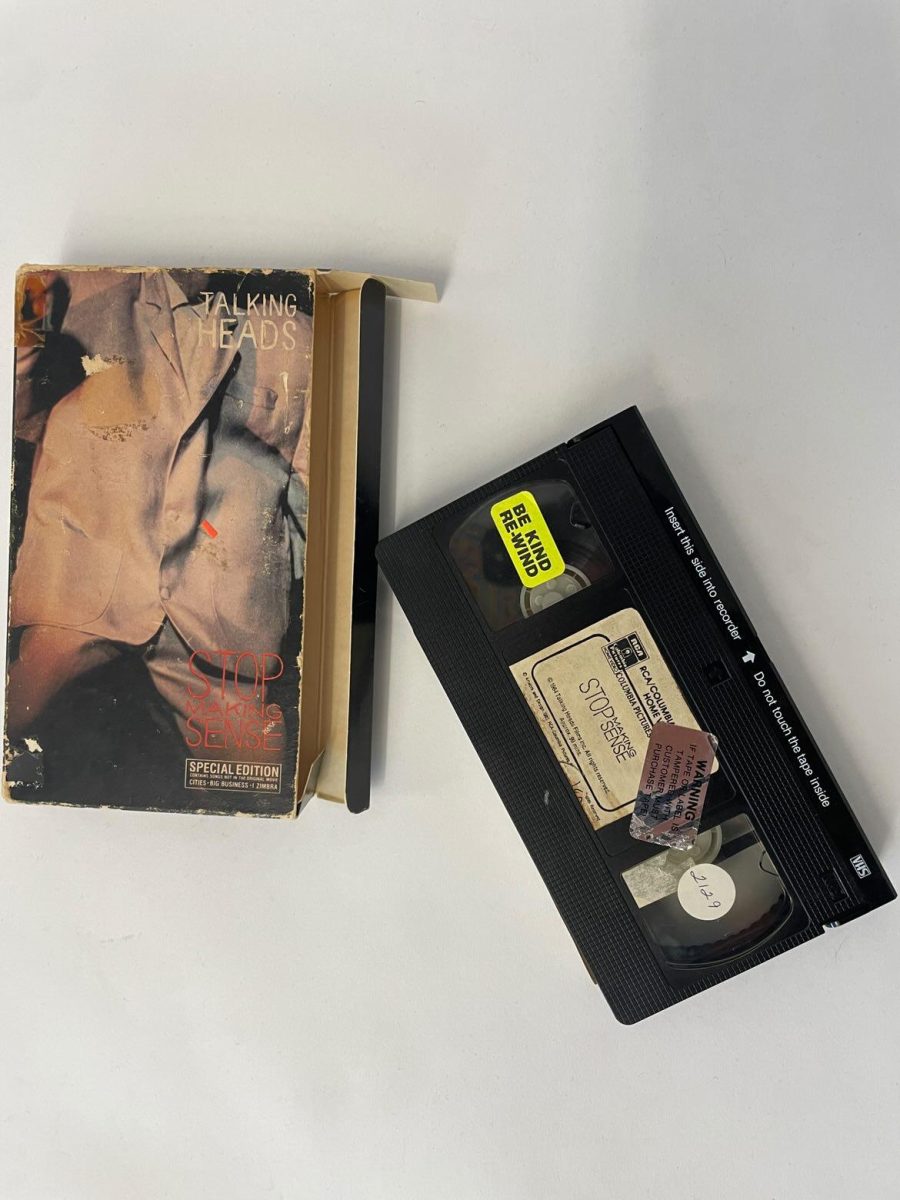From Dec. 13 through Dec. 16 1983, the Talking Heads took the stage at The Pantages Theater in Hollywood, CA. Just like all of their shows of their ’83 Tour that began August 1, only this time they were being recorded by 6 film cameras for video and were being recorded with analog technology for the audio. The Film Stop Making Sense would premiere just a few months later on April 24 1984 at the San Francisco International Film Festival.
However something new was in the works, The Sony PCM-3324 24-Track Digital Recorder was used and had all the audio transferred to it. The new technology would provide a new sound not heard on concert films before it. This use of early digital audio certainly helped it gain the title of #1 Concert Film of All Time.
Another thing that makes this film great is how the concert was set up. While technically the movie was directed by Jonathan Demme he wasn’t so much a director as he was a helper. All the band really needed to do was play their show as usual and just not look at the camera (a rule that was broken here and there). But the show is structured interestingly and like something you wouldn’t see anywhere else. The film opens with some short credit before we see some white sneakers, similar to Vans walk out on to a stage. We then see a boombox placed down and then hear “Hi. I’ve got a tape I want to play,” from a voice that turns out is David Byrne, Singer and Guitarist of the Talking Heads. Holding an acoustic guitar he allows the tape, which is actually someone back stage with a drum kit to begin playing. He opens the show with “Psycho Killer”, a song off their first album Talking Heads: ’77. This song shows us a few Byrne antics with some awkward walking around the stage broken by the drum skipping a beat and Byrne tripping around. Most times throughout the show when there is an instrumental break, we see that Byrne often without an instrument, finds other means of entertaining the audience with some more unconventional dance moves.
As the show continues to the second track, Tina Weymouth, the bassist/keyboard bass/vocalist/guitarist for the band joins on stage with a bass joining Byrne. Next is drummer Chris Frantz, and then Guitarist/Keyboardist Jerry Harrison. These four (Byrne, Weymouth, Frantz, and Harrison) are the main members of the Talking Heads. However the performers don’t stop there. Next on percussion is Steve Scales, then back up vocalists Lynn Mabry, and Ednah Holt. Mabry and Holt’s energy brings a whole new level to the show, but somehow can’t seem to beat Alex Weir after he joins the crew. If you pay attention to Weir throughout the show, he looks like he’s having the time of his life the whole time. Last but definitely not least is Bernie Worrell who you may know from Funkadelic/Parliament.
By the time everyone is on stage, the 9 piece band absolutely kills it throughout the whole show, song after song. Towards the end of the show Byrne leaves the stage for Frantz and Weymouth’s side project Tom Tom Club to perform their hit song “Genius of Love”. When Byrne returns for the song “Girlfriend Is Better”, (Which holds the origin of the film’s title) Something looks a bit different about him. Byrne is wearing his “Big Suit” that would become an iconic part of the Talking Heads and Byrne himself. The idea came to him after being inspired by Japanese Kabuki and Noh theater while visiting in Japan. He keeps the big jacket on for two songs then removes it before the encore.
The Encore “Crosseyed and Painless” is one of my favorite track from the whole film has quite the funny story to it. One thing Demme wanted to capture, was the crowd. In an attempt to do so the house lights were turned on so that the cameras could see the active and excited crowd. “The more light we put on them [the band] the more inhibited they were […] the more insecure the band was. And I wound up being responsible for the worst Talking Heads performance in the history of the bands career,” Demme said. Regardless of what Demme has to say for the track I personally love it. From the slower start that sets it apart from the studio recording all the way to the end.
The film is approaching its 40 year anniversary, and in celebration a collaboration with A24 brought a new remastered viewing experience to IMAX in theaters. Fortunately I was able to see a sneak preview before the opening weekend. In terms of the video quality, seeing it in IMAX was really a treat especially since my first time watching it was on YouTube on my T.V. (big upgrade). For the audio, the audio is the reason I would see it in theaters 10 times over if I could. The option to hear this show in a room full of speakers instead of listening to it in my headphones really changes the experience for the better. If you were sat dead center in the middle of the theater you could clearly pick out which instruments are coming from which speakers in the theater. Overall it was a great experience well worth the $16 movie ticket price. I’d recommend anyone even if you don’t know who the Talking Heads are to go and see it.
Along with the film’s rerelease, the album is newly remastered available on streaming with three extra tracks not in the original movie that were included in the special edition home release of the movie of VHS and DVD. The songs are “Cities” and “Big Business/I Zimbra”. The live version of “Cities” beats the studio version by a long shot.


